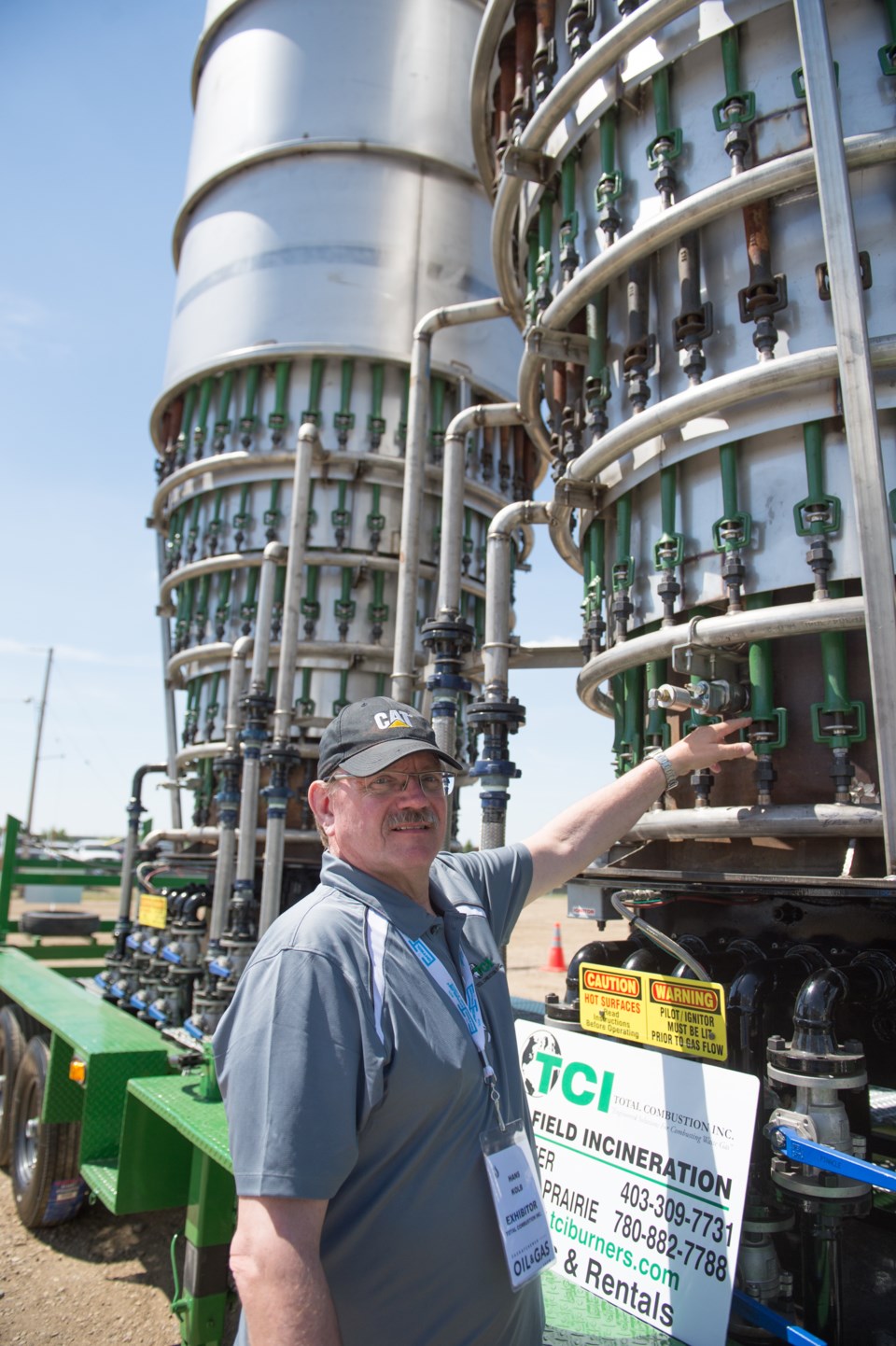Weyburn – Walking past Total Combustion Inc.’s booth at the Saskatchewan Oil and Gas Show, you could be forgiven if you thought they knabbed two engines from a Saturn V rocket, put them on a trailer, and pointed them to the sky.
Indeed, the interior of these bell-shaped units does contain a flame while in operation, but that’s because they’re incinerators, used to burn off waste gas.
Professional engineer Hans Kolb, manager of engineering, was on hand to answer questions on June 8.
“That’s what most people think they are,” he said, when asked about their resemblance to rocket engines. “It’s a waste gas incinerator. It’s a more environmentally-friendly way of burning waste gases, rather than flaring it.”
“The combustion takes place entirely within the cylinder, with no smoke or flaming coming from the top.
They had two units mounted on one trailer, with a capacity of five million standard cubic feet a day of waste gas.
The unit on display was for their rental fleet, and would typically be used for well testing or well completions. “If someone had a well producing a lot of gas, and, at present, had no use for that gas, they would use this unit until tied into a pipeline and tied into a gas plant.”
He noted flaring is definitely cheaper, but it’s annoying to locals.
“Another reason is you get a 99.8 per cent combustion efficiency, which is a lot higher than a flare stack,” he said.
They’re built in Red Deer, Alta. They have a few in Saskatchewan in the Oxbow area.
The company has been in business since the 1990s. The design is meant to not be affected by winds and rain. The cylinders tilt for transport.
“Wind, on a flare stack, you can get up to 10 to 20 per cent of the gas never actually going to the flame. It just gets blown off,” Kolb said.
The incinerator has several tiers, each ringed with dozens of burners with venturis that aid the combustion. More or fewer rings can be used as needed.
“We like to see about 40 per cent, or more, combustible,” he said of the gas flowing through. If it’s lower than that, they can supplement with natural gas or propane fuel, but that, of course, costs money.
An incinerator like this is much more complicated than a simple flare stack, and, as such, would cost more. Asked why they would be used, Kolb noted public relations between the oil company and its neighbours are one reason, While testing a well, it’s useful to keep the volume of gas confidential. He pointed out there are published equations to calculate the flow of a well based on the length of its flare and the size of the system.




